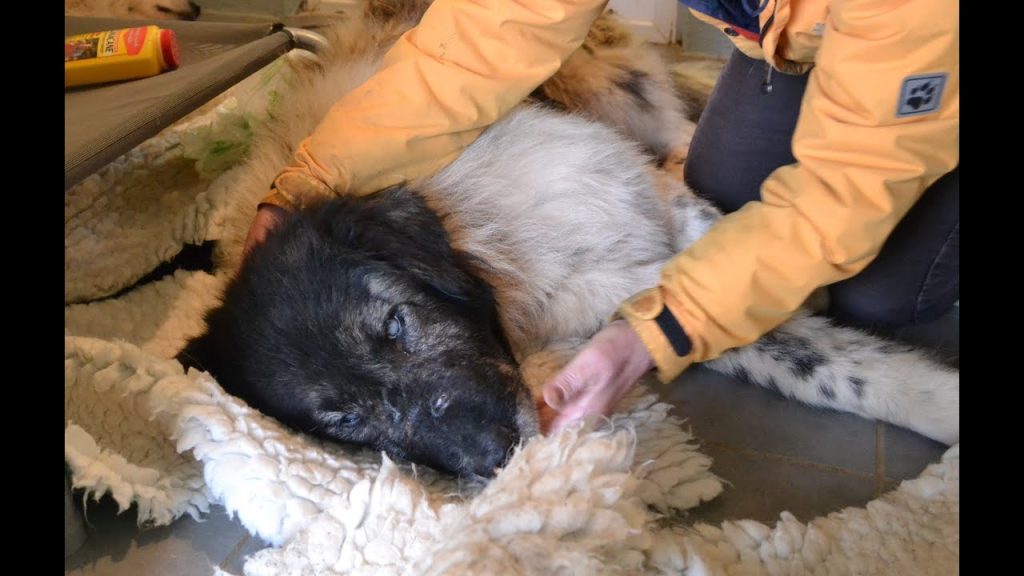Adopting Animals in the Family: Resources and Tips for Integrating Pets into Family Dynamics

Bringing a New Family Member Home
Adopting an animal can be among the most rewarding experiences for any family. It not only opens your heart but also your home to a new furry friend who can bring joy and companionship. However, integrating a pet into your family dynamics requires careful consideration and planning. The process involves more than simply choosing a cute face—it’s a commitment that impacts everyone in the household.
Before diving into the adoption process, it’s essential to understand important aspects such as:
- Family Readiness: Assess if your family is prepared for the responsibility of a pet. This includes understanding the daily needs of a pet, shared responsibilities among family members, and whether any family members have allergies or phobias regarding animals. Open discussions about individual concerns can help gauge overall family readiness.
- Pet Type: Determine which type of animal suits your family’s lifestyle. For example, if you have young children, a dog with a calm temperament may be ideal, while busy families may prefer lower-maintenance pets like cats or rabbits. Additionally, consider the size of your living space—smaller animals may be better suited for apartments.
- Commitment Level: Consider the time, space, and resources necessary to care for a pet. Different pets come with varying needs; for instance, a dog may require daily walks and companionship, while fish offer a low-maintenance alternative but lack the interactive companionship many families seek.
Once you’ve decided to adopt, the next step involves smooth integration. Adopting an animal is not just about providing a home; it’s about seamlessly blending their needs with your family’s existing routines. Successful integration helps establish a harmonious household environment.
Key resources include:
- Training Courses: Look for local training programs to teach your new pet basic commands. Many communities offer obedience classes that can foster better communication between you and your pet, while also enhancing social skills for dogs with other animals and people.
- Support Groups: Connect with others who have adopted pets for shared experiences and advice. Online forums, local shelters, and pet stores often host events where pet owners can meet, share tips, and develop friendships that can prove invaluable during the adjustment period.
- Veterinary Care: Research local veterinarians to understand the health needs of your new companion. Regular veterinary visits, vaccinations, and preventive care are essential in keeping your pet healthy and can also provide insight into the best practices for pet ownership.
Adoption opens the door to a partnership with your new pet, bringing countless benefits to family life. Studies show that pets can reduce stress levels, improve mood, and even encourage more active lifestyles. The companionship of a well-loved pet creates memories, teaches responsibility to younger family members, and can even provide emotional support. Furthermore, the enriching journey ahead doesn’t just change the dynamics within your home but also fosters a deep bond that lasts a lifetime.

LEARN MORE: Click here for valuable adoption resources
Establishing a Routine with Your New Pet
One of the most significant factors to consider when integrating a newly adopted pet into your family is the establishment of a consistent routine. Animals thrive on predictability, and creating a routine can help them adjust to their new environment while also ensuring that they receive the care and attention they need. Developing a daily schedule that includes feeding times, walks, playtime, and training sessions is key to fostering a smooth transition for both the pet and your family.
When formulating this schedule, consider the following aspects:
- Feeding Schedule: Choose specific times for meals and stick to them. This not only helps the pet understand when to expect food but also allows you to monitor their eating habits, which can be essential for their health.
- Exercise Needs: Different pets have varying exercise requirements. Dogs often need regular walks or play sessions, while energetic breeds may require more active engagement than others. Cats, on the other hand, enjoy interactive playtime but may satisfy their exercise needs with less frequent engagement. Tailor your routine accordingly to keep your pet physically and mentally stimulated.
- Training Opportunities: Incorporate short training sessions into your daily activities. This can enhance bonding between you and your pet while also promoting good behavior. Use positive reinforcement techniques to encourage learning and make training a fun experience for all involved.
- Family Engagement: Involving all family members in the pet’s routine not only lightens the load for any individual but also fosters a sense of shared responsibility. Collaborate with your children to assign specific tasks to each family member, such as feeding, walking, or grooming, which can improve communication and cohesion within the household.
As you work on establishing a routine, patience is vital. The initial adjustment period might be challenging, especially if your pet has come from a shelter or a previous home environment. Their past experiences can affect their behavior, so be attentive to their needs and provide plenty of reassurance. Creating a positive, nurturing space will help your new family member feel secure in their new surroundings.
The Role of Socialization
Socialization is another critical aspect of successfully integrating a pet into your family. Well-socialized pets are generally more adaptable and confident in various situations. Introduce your furry friend to different environments, sounds, and people gradually and positively. Whether it’s a trip to the park, meeting friends, or interacting with other pets, each experience can contribute to their overall development.
Consider enrolling your dog in dog parks or class settings where they can interact with other animals and people. For cats, focus on providing enrichment through toys and climbing structures while allowing them to explore different spaces within your home. These experiences not only enhance your pet’s social skills but also help alleviate stress and anxiety, ultimately leading to a happier, more integrated family member.
In conclusion, adopting a pet requires thoughtful preparation and continuous effort. By establishing routines and prioritizing socialization, your family can ensure a welcoming and harmonious transition for your new furry companion. Stay attuned to their needs, keep communication open among family members, and watch as your lives become inevitably enriched by the joy pets bring.
| Category | Details |
|---|---|
| Emotional Benefits | Adopting a pet can significantly enhance emotional well-being within the family by providing companionship and reducing stress levels for both children and adults. |
| Developmental Advantages | Integrating pets into family life teaches responsibility to children, nurturing empathy and social skills, which can positively affect their development. |
| Improved Family Dynamics | Pets can act as social facilitators, encouraging family interaction and bonding during activities such as walks, training sessions, or playtime. |
| Health Benefits | Studies show that having pets can lower blood pressure and encourage physical activity, leading to a healthier lifestyle for the whole family. |
When considering the important aspect of adopting animals in family dynamics, it is pivotal to understand the myriad of advantages presented. Each family may experience these benefits differently, but they can all contribute meaningfully to improving family life and dynamics. As families embark on this journey, understanding each category and its nuances can foster better integration and relationship-building with the newly adopted pets.
DISCOVER MORE: Click here for helpful training tips
Creating a Safe and Comfortable Environment
Once you have established a routine and tackled socialization, it’s imperative to focus on the physical environment in which your new pet will be living. A well-prepared home can make a significant difference in how quickly and comfortably your pet settles in. Every pet has unique needs, and addressing these factors will promote a sense of security within your household.
Here are several key considerations when creating a safe and comfortable environment for your new furry family member:
- Designated Space: Set up a specific area in your home where your pet can feel secure. This can be a cozy bed, a quiet corner, or an enclosed area that allows them to retreat when they need some alone time. For dogs, having a crate can provide a safe haven, while cats may appreciate a cat tree or hideout where they can observe their surroundings.
- Pet-proofing Your Home: Ensuring your home is safe for a curious pet requires thorough attention. Remove or secure items that can be harmful, such as toxic plants, small objects that can be swallowed, and cords that can be chewed. Additionally, ensure that garbage cans and cleaning supplies are out of reach to prevent any potential dangers.
- Providing Enrichment: Keeping your pet mentally stimulated is just as crucial as providing physical comfort. Invest in engaging toys, interactive puzzles, and scratching posts (for cats) to alleviate boredom. Exploring different textures, scents, and sounds can enhance their environment and promote healthy behaviors while curbing destructive tendencies.
- Safe Outdoor Access: If you have a yard, make sure it’s secure before allowing your pet to roam freely. Ensure that fences are tall enough and intact, and watch for any escape routes. For dog owners, consider leash training and designate specific areas for outdoor play. Providing a safe and secure outdoor space will offer your pet the freedom to explore nature while ensuring their safety.
Integrating Pets with Children
Bringing a new pet into a family with children can present unique opportunities and challenges. Educating children about how to interact with pets is key to ensuring positive relationships that foster empathy and responsibility. Here are strategies for making this integration smooth:
- Supervised Interactions: Always supervise initial meetings between your pet and children. This not only ensures safety but also allows you to reinforce gentle handling and appropriate behaviors. Teach children to approach pets calmly and respectfully, avoiding sudden movements or loud noises that might startle them.
- Setting Boundaries: Discuss boundaries with your children, explaining that pets also need their personal space. Train your kids to recognize signs of stress in pets, such as growling, hissing, or tail-tucking. Teaching them how to read animal body language can help prevent misunderstandings and foster a positive connection.
- Shared Responsibilities: Assign age-appropriate tasks related to pet care. Younger children could help with feeding, while older kids may take on duties such as walking the dog or cleaning litter boxes. This builds a sense of teamwork and ensures that everyone is actively involved in the pet’s care.
By focusing on creating a safe environment and encouraging interactions with children, families can promote a nurturing atmosphere that allows their new pets to feel loved and secure. This foundational step will pave the way for a rewarding relationship, enriching both the pets’ lives and those of the family members. As each family member adapts to their roles with the new pet, the bonds formed will resonate throughout the household, ensuring a fulfilling experience for all.
LEARN MORE: Click here for important insights
Conclusion
In conclusion, adopting a pet is a significant and rewarding decision that can profoundly enhance family dynamics. With the right approach, families can create a harmonious home that fosters strong connections between pets and family members. The integration of pets into family life not only requires thoughtful preparation, including establishing routines and creating a safe environment but also demands nurturing interactions, especially with children. Understanding the unique needs of both pets and family members is essential in ensuring everyone adjusts smoothly to their new roles.
As families embrace their new furry companions, it is crucial to monitor both the emotional and physical well-being of the pet while also instilling a sense of responsibility in children. This includes encouraging empathy, respect, and open communication about boundaries, which further develops trust between pets and family members. Remember, fostering a sense of community among your family and pet can lead to a lifetime of cherished memories.
For those looking to delve deeper into the enriching experience of pet adoption, resources such as local animal shelters, online forums, and pet care literature can provide valuable insights. By following these tips and continually adapting to the evolving needs of your pet, you will not only ensure their happiness but also enhance the overall wellbeing of your family unit.
The journey of integrating a pet into your household is one filled with challenges and rewards. Embrace this adventure with an open heart and mind, and your home will be infused with joy, laughter, and unconditional love.


